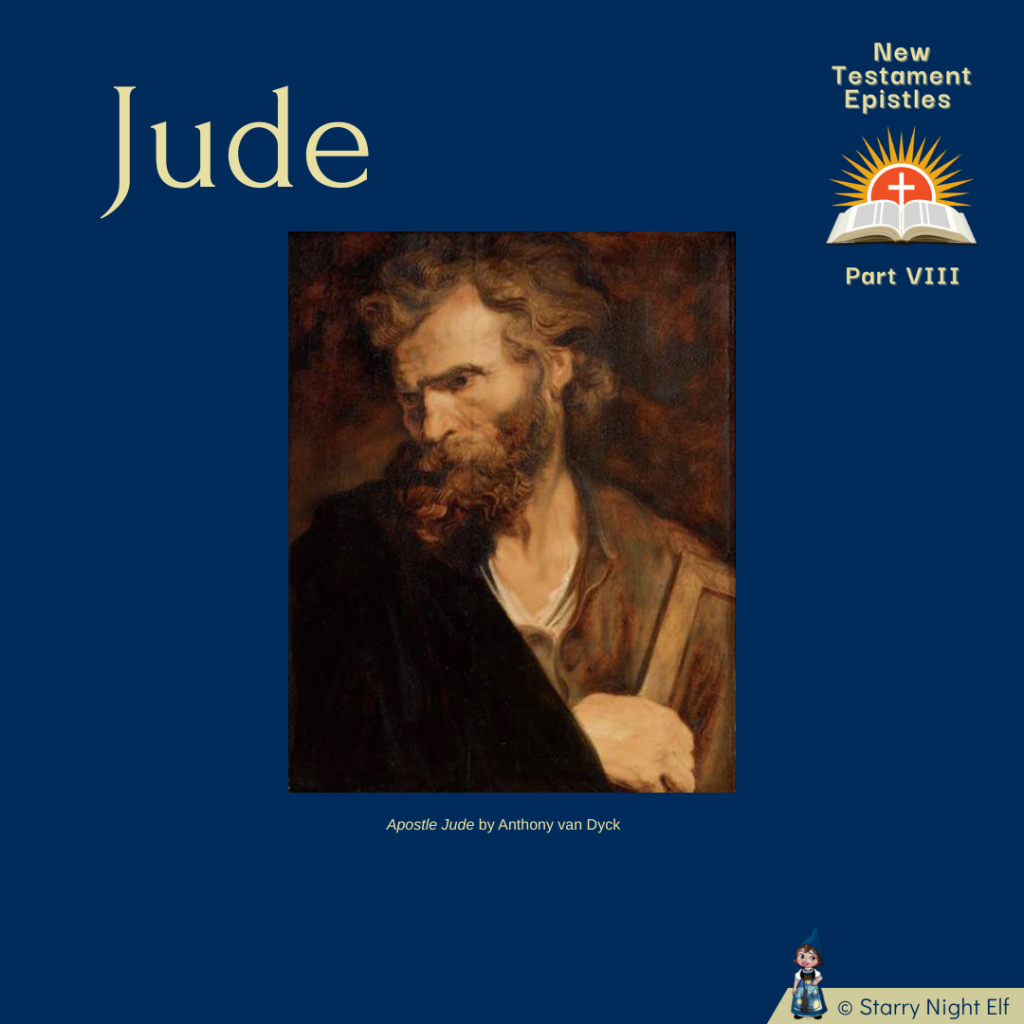
* Note — The Epistle of Jude will be last Starlight Book Review (SBR) for my 2022 reading of the Bible. Future posts regarding book(s) of the Bible such as Old Testament (OT) Prophets or New Testament (NT) Prophecy will be for 2023 or better.
Part of a series of SBR on NT Books of the Bible. Click here to see other NT SBR.
* The following post transparently exhibits my Christian faith.
5/5 When I first learned of the Epistle of Jude, my mind leapt to Paul McCartney’s vocals in the song “Hey Jude.” In the course of my readings of this brief, next to last book of The Bible, I know this Jude greatly contrasts from the subject of a Beatles’ song <smile>.
“The Epistle of Jude is the penultimate book of the New Testament as well as the Christian Bible. It is traditionally attributed to Jude, brother of James the Just, and thus relative of Jesus as well… Jude is a short epistle written in Koine Greek. It condemns in fierce terms certain people the author sees as a threat to the early Christian community, but describes these opponents only vaguely. According to Jude, these opponents are within the Christian community, but are not true Christians: they are scoffers, false teachers, malcontents, given to their lusts, and so on. The epistle reassures its readers that these people will soon be judged by God. It is possible that the group being referred to would have been obvious to the original recipients of the letter, but if a specific group was being referred to, knowledge of the details has since been lost. The one bit of their potential ideology discussed in the letter is that these opponents denigrate angels and their role. If this was indeed a part of the ideology of this group the author opposed, then the epistle is possibly a counterpoint to the Epistle to the Colossians. Colossians condemns those who give angels undue prominence and worship them; this implies the two letters might be part of an early Christian debate on Christian angelology.”
This short missive boils down to one thing — adhere to the faith. Do not let anyone or anything separate you from God. Instead, listen to the true teachers of the Christian faith.
Here is a verse which resonated with me:
2 Mercy, peace and love be yours in abundance.
Jude 1:2
* Bible Verses came from the New International Version (NIV) Bible, courtesy of Bible Gateway. Access Bible Gateway by clicking here.
Select Bibliography
Reicke, Bo (1964). The Epistles of James, Peter, And Jude (First ed.). Garden City, New York: Doubleday & Company, Inc. p. 189–192.



